Decorative fountains have long been an important feature in public spaces around the world. From ancient civilizations to modern cities, fountains have served both functional and artistic purposes. They add beauty, provide a place for reflection, and create a sense of community. Let’s explore the rich history of decorative fountains in public spaces.
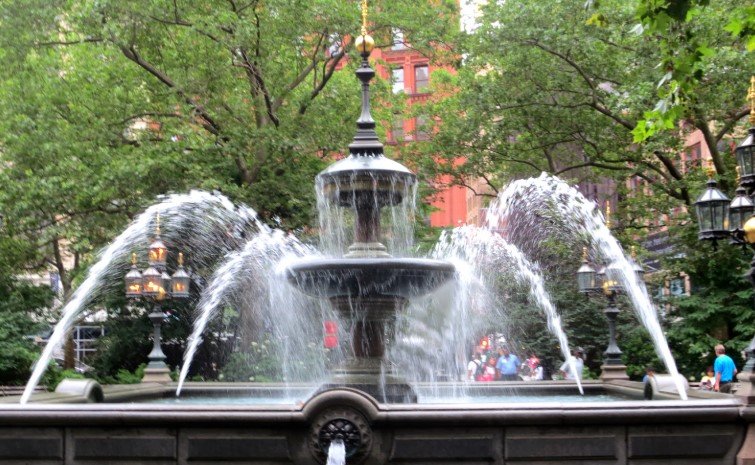
Ancient Beginnings
The history of decorative fountains dates back to ancient civilizations. The earliest fountains were found in Mesopotamia, Egypt, and the Roman Empire. These early fountains were primarily used for practical purposes, such as supplying water for drinking, irrigation, and bathing. However, the ancient Romans were among the first to incorporate artistic elements into their fountains. They often adorned these water sources with sculptures, marble, and intricate carvings to enhance their beauty.
Roman fountains, such as those found in public baths, courtyards, and temples, were often grand and elaborate. They became symbols of wealth and power, reflecting the importance of water in daily life. The engineering behind these fountains was advanced for their time, with aqueducts supplying water to public fountains throughout Roman cities.
Renaissance Revival
After the fall of the Roman Empire, decorative fountains largely disappeared from public spaces in Europe. However, during the Renaissance period, the interest in classical art and architecture revived, including the use of fountains. Italian cities such as Florence and Rome became famous for their ornamental fountains, often designed to showcase the grandeur and power of the ruling families.
The Medici family, in particular, played a major role in the development of decorative fountains during the Renaissance. Their lavish gardens were filled with elaborate water features, including the famous Fountain of Neptune in Florence. These fountains were often designed as intricate works of art, incorporating statues, pools, and water jets that created a spectacular visual display.
Baroque and French Influence
The Baroque period saw an explosion in the popularity of decorative fountains, especially in France. The French monarchs, particularly Louis XIV, used fountains to symbolize their absolute power and the grandeur of the royal court. The Palace of Versailles, with its numerous fountains, became the epitome of Baroque fountain design.
French fountains from this era were designed to impress and were often part of vast gardens or palaces. They featured elaborate sculptures, gilded details, and dramatic water displays. The gardens at Versailles, for example, included fountains that were not only beautiful but also technologically advanced, with water systems that powered multiple fountains at once.
Modern Fountains
In the 19th and 20th centuries, the design of decorative fountains evolved further with the advent of new materials and technologies. Public parks, town squares, and city streets began to feature fountains that were not just functional but also artistic. With the industrial revolution, fountains became larger and more complex, incorporating elements like electric lighting and pumps that allowed for more dynamic water displays.
One of the most famous modern fountains is the Bellagio Fountain in Las Vegas, which features water dancing to music and lights. This fusion of art and technology has become a hallmark of modern fountain design. Today, fountains in public spaces continue to reflect both artistic innovation and the desire to create spaces for social gathering and relaxation.
The Role of Decorative Fountains Today
Today, decorative fountains serve as symbols of culture, heritage, and public space beautification. Many fountains are placed in parks, town squares, and city centers, where they act as focal points that bring people together. They continue to serve both artistic and practical purposes, providing a place for relaxation, conversation, and reflection.
Modern fountains also play a role in environmental sustainability. Some fountains are designed to conserve water by using recycled water or incorporating water-saving technologies. Others are part of eco-friendly urban spaces, promoting the integration of nature and art in the built environment.
Conclusion
The history of decorative fountains in public spaces is a journey from ancient utility to modern artistic expression. From the functional water systems of the Roman Empire to the grandeur of Renaissance Italy and the Baroque French gardens, fountains have evolved into significant cultural landmarks. Today, decorative fountains continue to enrich our public spaces, adding beauty, history, and a sense of community to cities around the world.
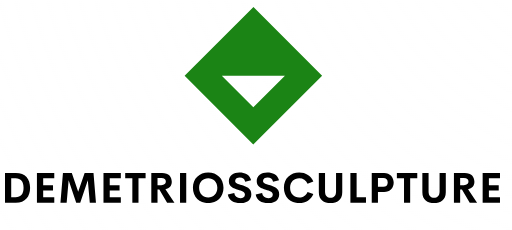





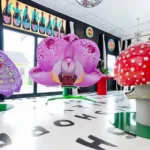
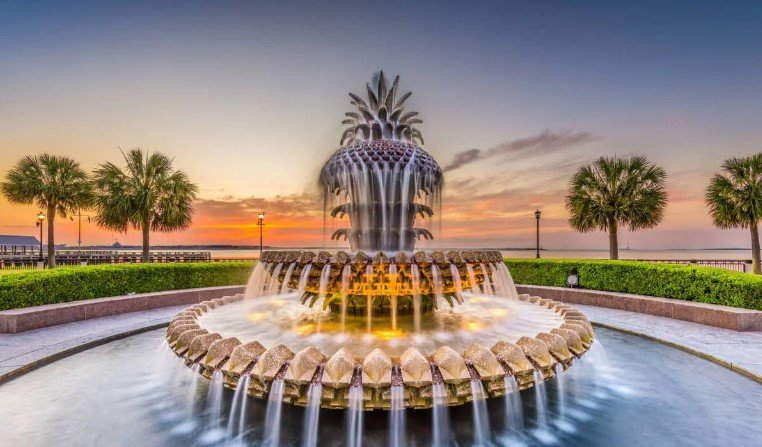
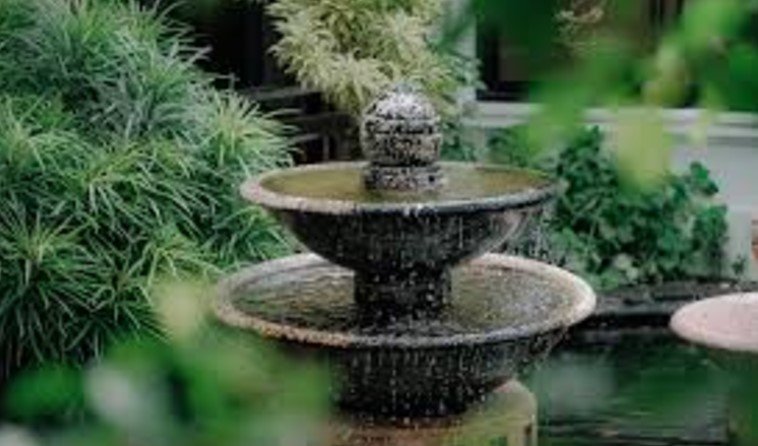
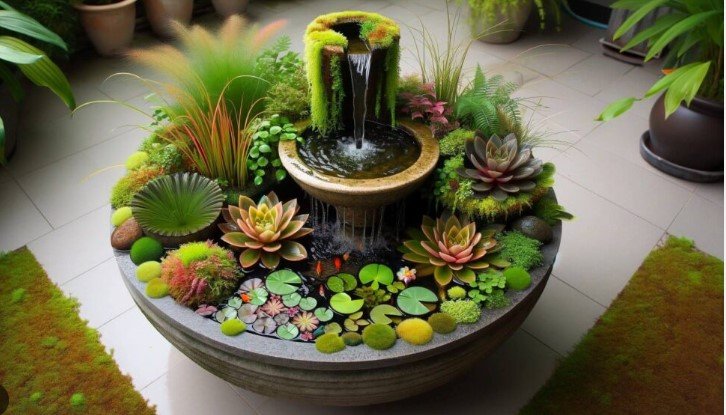
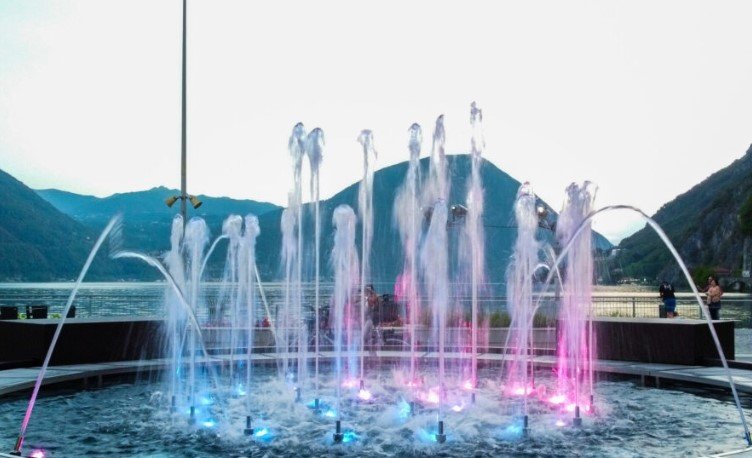
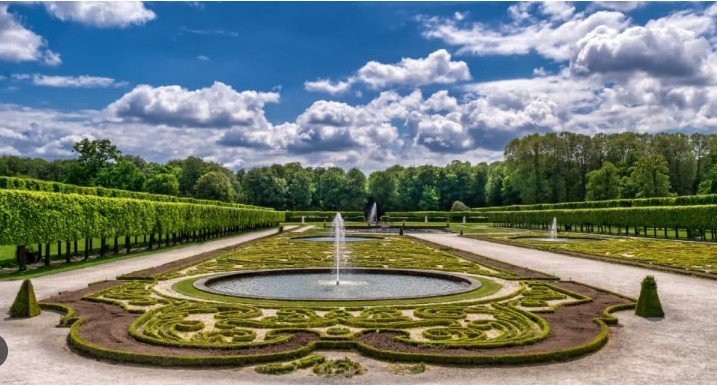
Hello there! Would you mind if I share your blog with
my zynga group? There’s a lot of folks that I think
would really enjoy your content. Please let me know.
Thanks
dfip9l
Hi my loved one! I want to say that this post is awesome, great written and include approximately all vital infos. I would like to see extra posts like this .
Hello.This article was extremely remarkable, particularly because I was investigating for thoughts on this matter last couple of days.
Oh my goodness! an amazing article dude. Thank you However I am experiencing concern with ur rss . Don’t know why Unable to subscribe to it. Is there anyone getting identical rss downside? Anybody who is aware of kindly respond. Thnkx
It’s amazing to go to see this website and reading the views of
all colleagues on the topic of this paragraph, while I am also eager of getting knowledge.
Admiring the time and effort you put into your website and in depth information you present. It’s good to come across a blog every once in a while that isn’t the same old rehashed material. Wonderful read! I’ve bookmarked your site and I’m including your RSS feeds to my Google account.
Howdy just wanted to give you a brief heads up and let you know a few of the pictures aren’t loading correctly. I’m not sure why but I think its a linking issue. I’ve tried it in two different internet browsers and both show the same results.
I’ve been surfing on-line greater than three hours nowadays, but I never found any attention-grabbing article like yours. It is lovely value sufficient for me. Personally, if all web owners and bloggers made just right content material as you probably did, the internet shall be much more helpful than ever before.
I like the valuable information you provide on your articles. I will bookmark your weblog and test once more right here regularly. I am rather sure I will be informed lots of new stuff proper right here! Good luck for the next!
connectwiththeworldnow – Clean interface, message is upfront and design feels coherent.
I wish to express some thanks to you just for bailing me out of this type of predicament. As a result of browsing throughout the the web and seeing techniques that were not helpful, I believed my entire life was well over. Being alive without the presence of approaches to the problems you’ve fixed all through this article is a critical case, as well as ones which may have in a negative way affected my career if I hadn’t encountered your web site. Your own personal expertise and kindness in handling all the details was excellent. I am not sure what I would’ve done if I had not encountered such a thing like this. I can also now relish my future. Thank you very much for the reliable and sensible guide. I won’t think twice to suggest the website to anybody who should have support about this situation.
We are a group of volunteers and opening a new scheme in our community. Your website offered us with valuable info to work on. You have done an impressive job and our entire community will be thankful to you.
you are in point of fact a good webmaster. The website loading pace is amazing. It kind of feels that you are doing any distinctive trick. Also, The contents are masterwork. you’ve performed a great task on this matter!
**mind vault**
mind vault is a premium cognitive support formula created for adults 45+. It’s thoughtfully designed to help maintain clear thinking
Thank you for the auspicious writeup. It in fact was a amusement account it. Glance complicated to more brought agreeable from you! By the way, how could we keep up a correspondence?
Wow that was strange. I just wrote an very long comment but after I clicked submit my comment didn’t show up. Grrrr… well I’m not writing all that over again. Regardless, just wanted to say great blog!
genopharm hgh kaufen
References:
http://git.modelhub.org.cn:980/mzdmurray51020
hgh injektion kaufen
References:
https://v.gd/h1TxZX
hgh fragment 176 191 kaufen
References:
https://codimd.fiksel.info/wyjZ8ReVR8KinU5pn9sZ-A
Magnificent web site. A lot of useful information here. I am sending it to some friends ans also sharing in delicious. And of course, thanks for your sweat!
hgh apotheke kaufen
References:
git.wisptales.org
Fast therapeutic is not just about protein—it’s how your body
repairs cells whenever you rest. To do that, researchers used human gut cells
(Caco2-BBE and HT29-Cl.19A) and immune cells (Jurkat
T cells), exposing them to inflammation-triggering chemicals with or
without KPV. They measured how active inflammation-related indicators had been and how many inflammation-related proteins were produced, using
numerous lab tools.
We usually say “having eight or more fillings” is
an issue that must be addressed after we get the
general well being of the patient beneath higher control. Nonetheless, watch out along with your food
regimen as a gentle food plan of canned tuna-fish or tuna sushi is definitely enough
to trigger methylmercury build-up with effects on the gut and other organs.
Actually those of you eating a regular inflammatory American diet likely
do have a degree of leaky gut. We even accumulate toxins via skincare products, and from non-filtered showerhead water.
If we’re in a dusty home, even when we don’t have dust mite allergy symptoms, dust
mites have been demonstrated to cause leaky intestine.
Whereas BPC-157 and KPV possess outstanding particular person qualities, their true potential could lie of their mixed application.
KPV helps steadiness the immune response by reducing extreme immune activity without
suppressing the system completely. KPV has shown minimal unwanted aspect effects
in analysis studies, though, like all peptides,
it ought to solely be used under medical supervision. Further experiments explored the influence of nitric oxide utilizing the inhibitor Nω-nitro-l-arginine methyl ester (l-NAME), which appeared to
impede the accelerated healing impact of KPV on corneal
epithelial wounds. This means that the constructive impact of KPV on corneal epithelial wound healing could additionally
be linked to nitric oxide dynamics within the tissue.
Some individuals choose creams for pores and skin points like redness or eczema—just rub a small bit into the skin after a shower.
In summary, the first mechanism of motion seen in BPC-157 is the creation of latest blood vessels, a process known as angiogenesis.
Scientists isolated BPC-157 from human gastric juice and have used it
to reinforce regeneration and pace up pure healing processes.
I’m a giant fan of Peptide Remedy and I have efficiently used peptides in my apply when working
with my Mold Illness, Toxicity and CIRS clients. The FDA’s newest tips emphasize the significance
of rigorous testing and validation in peptide analysis.
At PeptideGurus, we adhere to these guidelines by collaborating with JANOSHIK
LAB, a pacesetter in HPLC, GCMS, and LCMS testing.
This partnership guarantees that our KPV peptide batches are of the
highest purity and high quality. Direct Peptides
presents varied formulations including 2 mg vials, nasal sprays in 15ml and 30ml bottles, pre-mixed peptide pens,
and stacks for mixed analysis functions.
Taken orally, KPV reduces the incidence of colitis, as proven by a lower
in proinflammatory cytokines (Dalmasso G, 2008). In the case of colitis, KPV lowered weight reduction, colonic exercise
and decreased irritation and proinflammatory cytokine
levels (Dalmasso G, 2008). KPV calms the response of colonic epithelial and immune cells and reduces the incidence of colitis in vivo (Xiao B, 2016).
Another examine investigated the anti-inflammatory effects of KPV in TNBS-induced colitis models.
These actions make KPV extremely efficient in managing inflammatory conditions similar to inflammatory
bowel illness (IBD), arthritis, and pores and skin inflammation. A study(2) was published in 1989 explaining how the tripeptide was isolated and its biological potential decided.
As a half of the study, scientists isolated the KPV peptide and offered it
to experimental mice to determine its potential to mitigate swelling in their ears.
The article highlights how combining peptides into
stacks amplifies their effectiveness, enabling researchers to focus on specific pathways and obtain improved experimental outcomes.
From muscle growth and tissue restore to cognitive
enhancement and immune function, the potential purposes of peptide stacks
are huge and transformative. The potential of peptide therapies in supporting individuals with autism is encouraging.
Environmental health research shows KPV mitigates pollution-induced inflammatory responses in mobile fashions.
Research look at safety against pyroptosis caused by nice particulate
matter exposure[8]. This complements its wound healing properties in infected tissue models[6].
In some cases, KPV is given as an injection beneath the skin or into a vein, especially
for widespread inflammation, with doses starting from zero.1 to 2 milligrams, given a couple of times day by day.
This helps the peptide unfold quickly by way of the body to target drawback areas.
Its anti-inflammatory and regenerative effects may scale back signs of growing older,
corresponding to wrinkles and hyperpigmentation, whereas promoting a healthier pores and skin barrier.
It is sometimes integrated into topical formulations for these functions.
When it comes to sourcing high-quality KPV peptides for analysis functions, we
stand out as a trusted supplier. We emphasize rigorous high quality assurance
protocols to make sure the purity of our KPV peptides, with purity testing carried out for every batch.
KPV is often studied together with different brokers, exhibiting potential synergistic effects.
Nonetheless, managed research are essential to comprehensively evaluate interactions and optimize remedy efficacy.
Medical professionals categorical cautious optimism regarding KPV, acknowledging its vital therapeutic potential whereas emphasizing the necessity for complete medical
trials and detailed safety assessments. Healthcare providers advocate for additional investigation to ascertain clear efficacy
profiles, optimum dosages, and long-term security earlier than wider clinical adoption. When your gut lining is
coming together-usually the two to 3 week mark, add probiotics.
Do not buy and even make your individual yogurt; you can’t have dairy
but, remember? Historically, we have really helpful 50 to 100 billion probiotic CFU’s per
day.
References:
hafrikplay.com
buying steroids online safely
References:
soundcashmusic.com
synthetic corticosteroid
References:
https://git.hexdive.com
negatives bodybuilding
References:
https://git.mario-aichinger.com
stariods
References:
https://music.magic-pics.tk/
anabolika und hgh kaufen
References:
allowmusic.ru
hgh kaufen ohne rezept
References:
zenwriting.net
animal cuts gnc
References:
silatdating.com
what supplements do bodybuilders take to get ripped
References:
git.tea-assets.com
legal winstrol alternative
References:
git.lunax.dev
best anabolic protein
References:
https://gitstud.cunbm.utcluj.ro/earnest81q1976
illegal anabolic steroids before and after
References:
https://datez.pro
anabolic steroids statistics
References:
https://gogs.tyduyong.com/
You have brought up a very excellent points, appreciate it for the post.
For instance, its half-life may be as high as 13.3 hours in the aged.
Thus, if we state the half-life as 10.4 hours,
a post-cycle therapy protocol ought to start fifty
seven hours after the final dose. DHT (dihydrotestosterone) is a robust androgen that binds to hair follicles on the scalp, resulting in miniaturization and inhibited progress.
Nonetheless, Anavar is exclusive on this respect, being
principally metabolized by the kidneys.
From the steroid scandals that plagued major league baseball to the
jokes that surround steroid unwanted effects amongst weightlifters and bodybuilders, utilizing
steroids doesn’t take pleasure in an excellent status. A descriptive
examine of antagonistic events from clenbuterol
misuse and abuse for weight reduction and bodybuilding.
Insulin resistance and diminished glucose tolerance in powerlifters ingesting anabolic steroids.
The Journal of scientific endocrinology and metabolism, 64(5), 960–963.
(2) Schimrigk, Häusler, G., Blümel, P., Plöchl,
E., Waldhör, T., & Frisch, H. We discover Anavar works fast because of its short half-life of 9–10 hours.
In our experience, customers generally notice an enchancment in body composition inside the first two weeks.
Warmth pads or warm baths loosen up muscles by dilating blood vessels,
while foam rolling breaks up fascia adhesions, enhancing mobility.
Bodily therapy, particularly strategies like dry needling or myofascial release, addresses chronic
pain at its source. For stress-induced muscle tightness, mindfulness practices
like yoga or progressive muscle relaxation (PMR) cut back systemic tension, providing long-term benefits without medicine.
Nonsteroidal anti-inflammatory medicine (NSAIDs) like ibuprofen (200–400 mg every 4–6 hours) or naproxen (220–550
mg twice daily) are widely used for muscle pain and irritation. Nonetheless, extended
use can hurt the kidneys and stomach, so they’re best for
short-term reduction. Muscle relaxants corresponding to cyclobenzaprine (5–10 mg at bedtime) or methocarbamol (500–1,500 mg daily) directly goal muscle spasms but may trigger drowsiness, limiting daytime use.
For neuropathic pain, gabapentin (300–600 mg thrice daily) modulates nerve alerts, providing relief without steroid-related unwanted
effects.
On the other hand, injected steroids along with “oral steroids are likely to have the most significant and potentially dangerous unwanted effects,” says McNeely.
In truth, up to 90% of patients will expertise unwanted effects while taking steroids.
I’m utilizing 15 mg a day of Ostarine in the intervening time and am
blown away by the energy gains and recomposition results it’s had
in as little as 30 days. Nonetheless, Dr. Thomas O’Connor has noticed hepatotoxic effects from Cardarine primarily based on his remark of affected person labs in over 2,000 SARM
customers. He likens Cardarine’s antagonistic effects
on the liver to taking 50 mg/day of Anavar.
It’s additionally necessary to focus on potential side
effects, such as testicular atrophy. Some customers share steroid balls earlier than and after footage
to doc these modifications. If you are a newbie steroid person you should limit your first few cycles to 4-6 weeks on, and the identical time off.
After a number of of these cycles, nonetheless, you could wish to extend your cycle length to eight, 10, after
which, at a most, 12 weeks. Elevate your features with HGH-X2,
a testomony to achieving optimum results with minimal dangers within the realm of
legal and safe performance enhancement. Out There for purchase at Crazybulk via the handy ‘Buy Here’ button on the best, HGH-X2 just isn’t only tailor-made for muscle progress but additionally
proves its versatility by aiding in fats loss. The probabilities you experience
unwanted side effects goes up the longer you
take them, especially should you use them for a very long time.
In animal research, RAD-140 has been shown to be less toxic
than testosterone substitute therapy when administered to rats.
Girls could make the most of 5–10 mg/day for the same
period, enabling them to expertise the advantages of RAD-140 without any
virilizing effects. He gained 5 lb (2.three kg) in weight,
with some of this being within the type of
adipose tissue, due to 12 weeks of eating
in a modest calorie surplus. Nonetheless, the profiles mentioned are probably the most commonly used AAS that we
see utilized today by bodybuilders to boost their physiques.
Dbol is typically used in bulking cycles to help users build large quantities of muscle dimension and energy.
Balancing the therapeutic advantages of
steroids against their potential dangers is a delicate act.
Whereas steroids may be life-changing for many situations, their use in older adults requires warning and experience.
For chronic situations, doctors purpose to
prescribe the bottom efficient dose for the shortest possible time.
Regular check-ups with a healthcare supplier are essential to evaluate the continued need for steroids and handle potential
side effects. By considering these alternate options, healthcare providers can usually reduce the required steroid dose or length of treatment,
thereby minimizing the risk of antagonistic effects.
One of the search results for Luke’s debunking leads you to a web page with —
it’s a quote — «Masturbation methods for chubby people».
We’re fairly positive you’ve heard the phrase “it’s all individual” or “all persons are different” a
minimal of as soon as in your lifetime. There’s an enormous probability you’ve heard it a
quantity of instances, and even so many occasions, that this phrase makes you sick.
In this page, the time period ‘steroid’ particularly refers to anabolic androgenic steroids.
If you’ve carried out a quantity of cycles already, but you’ve never used deca;
expect to gain an additional lbs of lean muscle tissue. This is actually a big amount of muscle for a bodybuilder who’s been around the block a few times…and has consumed numerous cocktails
of steroids. Thus the load you’ll gain on deca will
mostly be lean muscle tissue, as opposed to water retention. Many people consider
deca isn’t anywhere close to as powerful as Dianabol for building
muscle as a result of a consumer might gain 35 lbs on Dianabol and solely 20 lbs on Deca.
Stacking deca with testosterone/dianabol will allow you to construct
round 30 lbs of lean muscle out of your first cycle.
Deca is much like testosterone sustanon within the sense that it may give a
user big muscle/strength features, with out inflicting harsh unwanted effects.
This occurs as a outcome of Deca will increase prolactin ranges, which may result in a drop
in testosterone and cause some points in the bedroom. However
don’t worry, we’ll get to how to keep away from deca dick in only a bit.
If you’re after huge muscular tissues with insane thickness, Deca Durabolin is your go-to.
This steroid is famous for packing on measurement and creating that
full, stable look each bodybuilder desires of.
References:
Anadrole injection technique
Although Anadrol isn’t a beginner’s steroid, your first
time utilizing it ought to be conservatively dosed no matter your expertise with some other AAS.
You’ll need to evaluate your response as a end
result of it could be variable among individuals (and monitoring
your cardio and liver well being is beneficial with bloodwork).
Newbies can start at 50mg day by day, though even 25mg will produce noticeable outcomes,
typically with minimal unwanted effects. Even although technically, DHT-derived AAS shouldn’t lead to estrogenic conversion and aspect
effects11, Anadrol is well-known for these adverse effects (water retention and gynecomastia, for example).
This makes Anadrol a very completely different person experience than the opposite well-known DHT-derived steroids and is an effective
reason we shouldn’t assume that all DHT steroids are
alike.
All AAS will elevate a person’s blood stress because of exogenous testosterone, causing a adverse shift in levels
of cholesterol. This ends in an increase in LDL (bad) levels of cholesterol and a
decrease in HDL (good) levels. Nevertheless, we discover the lean muscle features on Anadrol are nonetheless vital due to
increased testosterone ranges, protein synthesis, and nitrogen retention. When it comes to using a powerful
performance enhancement device like Oxandrolone, it’s crucial to know tips on how to incorporate it right into a cycle properly.
It’s potent, so beginning with a decrease dose
allows the person to gauge their body’s response earlier than slowly
rising the dosage, provided they tolerate it properly. Nonetheless, it
should be remembered that nearly all male Deca-Durabolin users are stacking
it with a useful amount of testosterone, which is in a position to
boost those PedsElite muscle gain and strength gains.
It is necessary to note that the hormonal results of steroids can extend beyond muscle tissue.
Androgen receptors are present in numerous organs and methods of the body, including the
reproductive system, the cardiovascular system,
and the central nervous system. This extensive distribution of androgen receptors explains the potential
impact of steroids on these methods and the potential for opposed unwanted aspect effects.
Whereas steroids can be taken orally, they’re commonly administered via injections.
These substances are available each legally, with a prescription, and illegally on the black market.
In some countries, the usage of steroids and not utilizing a
prescription is taken into account a felony offense
because of their potential well being risks and abuse potential.
Lee Priest, a former Mr. Olympia pro, is an effective example of a bodybuilder who retains muscle mass
regardless of not currently using anabolic steroids. Nonetheless,
Lee has continued to coach regularly as he’s aged,
thus profiting from the extra muscle nuclei he accumulated from
exogenous steroid use. They make male traits stronger and
assist construct muscle, presumably growing penis measurement.
Studies present many males face erection issues as they grow old, making them
thinking about steroid treatments3. It’s important to verify well being and hormone levels to avoid harm
from long-term use.
Anadrol’s androgenic ranking is about half that of testosterone, however there are other methods androgenic unwanted aspect effects can rear their ugly head.
As A Outcome Of these estrogenic-type side effects aren’t
attributable to estrogen conversion, aromatase inhibitors won’t help.
Still, since they’re anti-estrogens, they will convey estrogen levels down too low, which brings
about its own set of problems (including worsening the already serious effects
on cholesterol).
This mixture has confirmed to be successful in treating 44–100%
of our male patients suffering from hypogonadism. In phrases of weight achieve, it’s common for users to gain 20 kilos in the first 30 days on Dianabol (3).
Most of this will be in the form of muscle mass (plus some water retention).
Primobolan has a decrease androgenic ranking compared to different anabolic
steroids, meaning it has a decreased chance of inflicting androgenic unwanted aspect effects similar
to hair loss, acne, or deepening of the voice in women.
The term “anabolic” refers to the muscle-building properties of those drugs, whereas “androgenic” refers to their ability to advertise
male traits. When athletes use anabolic steroids, they purpose to
increase protein synthesis, resulting in sooner restoration, enhanced muscle
development, and improved performance. While anabolic
steroids have respectable medical makes use of, their misuse, notably in sports, has raised issues about well
being and ethics. Anabolic steroids are artificial substances that mimic the effects of testosterone in the physique.
Many nations have made anabolic steroids illegal with no prescription. Understanding these laws is necessary, as misuse can lead to legal penalties and health points.
They can help in treating circumstances like delayed puberty,
illnesses that cause muscle loss, and even hormone-related disorders.
Their therapeutic benefits can supply hope to these on the lookout for efficient treatment options.
People can lose weight and muscle mass after a long-term infection or after a serious injury or sickness.
A doctor might prescribe anabolic steroids for the affected person to
help him or her get well, build muscle, and acquire weight.
Sometimes, for reasons that are not but understood, an individual who doesn’t
recuperate from an illness has problem maintaining enough
weight to stay inside the normal wholesome weight vary.
It’s not as thrilling as a steroid like Dianbol that packs on size and power seemingly in days or that provides
the overall influence of excitement corresponding to
a steroid like Trenbolone. But when it comes to an throughout
steroid, one which produces quality features, promotes so many well being advantages and
produces solid outcomes, Nandrolone will all the time be on the high of the listing.
You can buy Nandrolone online from quite a few black market suppliers.
Nandrolone just isn’t a generally counterfeited steroid, however it does
occur. Of course you would possibly also find you’re buying from a direct scammer, somebody
that takes your money and supplies no product. Nonetheless, there are many high quality suppliers and you’ll discover it’s also one of
the most affordable steroids in the marketplace.
For example, somebody centered on cutting fat while preserving muscle may select
Oxandrolone because of its delicate nature and fat-burning properties.
Conversely, a user in search of fast mass acquire
would possibly go for Methandrostenolone however should concentrate on potential unwanted
facet effects. For athletes, rising muscle mass may promote power,
which may enhance strength-based sports efficiency.
Anabolic steroids (artificial androgens) work by activating androgen receptors in your physique and mimicking the
consequences of natural androgens.
These substances are often used to build muscle quickly
and enhance athletic efficiency. In Contrast To TRT, which is geared toward restoring regular hormone ranges, anabolic steroids are usually taken in a lot greater doses to attain enhanced results.
Performance-enhancing steroids, also referred
to as anabolic-androgenic steroids (AAS),
are artificial variations of the male sex hormone testosterone.
They are generally utilized by athletes and bodybuilders to enhance muscle mass, strength, and
overall athletic performance. However, using performance-enhancing steroids isn’t restricted to skilled athletes and
has been increasingly in style among leisure gym-goers and people looking for
to reinforce their physical look.
You can run this stack for up to 12 weeks, but don’t discount even quick cycles of
simply 4 weeks with the flexibility to ship excellent results.
If you utilize Ibutamoren alone in a cycle, you’ll be able to expect reasonable muscle gains of up to 10 lbs.
Whereas the potential fat loss effects are useful, they
are not as powerful as with another compounds.
MK-677 is a compound that some people can use with little
issue, while others don’t enjoy it as a result of
they’re susceptible to the potential unwanted effects.
Alternatively, therapeutic phlebotomy may be considered for many who, towards better judgment, proceed AAS use for
prolonged periods of time. However, it remains to be determined whether therapeutic phlebotomy impacts medical
endpoints similar to MACE and VTE or solely ‘treats’ a laboratory abnormality.
These medication that include testosterone and progress hormone, are often used
illegally with no prescription and are sometimes abused
in order to improve one’s athletic efficiency and appearance.
Teens use these anabolic steroids with the hope to increase their
exercise performance but as they’re nonetheless at a younger
age, it places them at a excessive risk of health issues.
Thus, some customers follow the trail of anabolic steroids and
use them to extend confidence ranges.
These involve evaluating the security, administration, legality, and unwanted
effects. This is because, unlike steroids, SARMs
are selective with the androgen receptors they aim. This means with most SARMs, ladies can anticipate no deepening of the voice or body hair progress and,
generally, no improvement of masculine traits.
Definition, vascularity, and muscle hardness enhance because the cycle
progresses, and critically, while you’re on a tough food plan – you won’t feel
a lack of power, energy, or stamina. This makes it easy to go at
full tempo in no matter coaching you’re enterprise whereas knowing that even when you’ve pushed to the limit, the SARM Slicing Stack promotes fast recovery and
reduces muscle soreness. Cardarine will make your body
use fat as gasoline, leading to potentially very
quick fat-burning quickly after beginning this cycle. You’ll
notice that your capability to retain muscle
is considerably easier, due to Ostarine.
This class of medication inhibits the enzyme PDE5 which breaks down cGMP – the second messenger molecule
liable for conveying the signal of the cavernous nerve to induce an erection (195).
PDE5 inhibitors are the mainstay drug in erectile dysfunction therapy and are generally tolerated nicely,
providing passable outcomes. Aspect results embody headache, flushing, dyspepsia, nasal congestion, dizziness,
transient abnormal imaginative and prescient and cyanopsia (specific to sildenafil),
and back ache and myalgia (specific to tadalafil) (196).
Whereas these drugs are commonly already acquired by AAS customers from the black market, they may be prescribed to patients suffering from erectile dysfunction which is both natural
or psychogenic in nature. A referral to a sexologist is advised for
those in whom a psychogenic trigger is likely
– which is widespread in our expertise. As advised by Baxmann et al.
(166), measuring serum cystatin C might be more reliable to estimate GFR in healthy
individuals with higher muscle mass and potential delicate kidney impairment.
This hormone and its derivates are sometimes often recognized as anabolic steroids.
Bodybuilders and weight lifters usually are not the one athletes to assume that anabolic steroid use is their street to success.
Both phrases describe synthetic substances which have been manufactured to mimic the
consequences of testosterone, the intercourse hormone
mainly produced in the gonads – the glands concerned in reproduction (testicles or ovaries).
As A Result Of the overwhelming majority of steroid
users are males, less research has been carried out on their impression on women, and that is reflected in the
results described. According to their buildings and primary capabilities,
every variant of synthetic testosterone can be utilized in one other way.
For example, nandrolone decanoate is commonly known as Deca-Durabolin.
Mibolerone (Cheque Drops) was a generally used product
HGF Max for strength and endurance suspending estrus cycles in bitches.
Masculinization of female canines, liver toxicity
and the promotion of some kinds of most cancers are essentially the most regarding side effects.
Progestins are steroid hormones which are prescribed to postpone heat cycles or alleviate false pregnancies in female canines and treat benign prostatic hypertrophy in male dogs.
Fludrocortisone (Florinef) is a synthetic hormone allotted in tablet form for oral administration. All these medication are safe but could cause elevated thirst and urination.
Anavar’s results of serving to you sculpt a lean, onerous physique
can be extra delicate. In an 8-week cycle, you probably
can expect to see noticeable positive changes within the first one
to 2 weeks, and of course, the higher your workout and
food plan program, the better and sooner outcomes you will notice.
Hopefully, no one on the market thinks you can take a steroid
after which sit back with your ft up, consuming chocolate
cake all day, anticipating to rework into Vin Diesel magically.
As lengthy as you’re prepared to work for it, Anavar can and does ship
satisfying outcomes typically. There are a nice quantity of dangers to long-term well being, a
few of which we’d not discover until much later in life.
I’m not willing to take that risk anymore, and that’s how I came across what I imagine is the primary
legal substitute for Anavar – Anvarol.
The adverse effects of AAS use rely upon the product, the
person’s age and sex, how much they use, and for the way lengthy.
Different causes for use could embrace therapeutic or recovery
and enhancement of metabolism. Your moods and feelings are balanced by the limbic system of your mind.
Steroids act on the limbic system and may trigger irritability and mild depression. Finally, steroids may cause mania, delusions, and violent aggression, or “roid rage.”
Anabolic steroids are artificial variations of testosterone,
the hormone answerable for muscle development, energy, and performance.
Whereas both injectable and oral steroids serve comparable anabolic purposes, how they’re administered can considerably impression their efficacy, side effects, and
outcomes. Though Anavar has gained reputation as being a ‘cutting agent’ or ‘cutting steroid’ all through
the previous, its capabilities are not limited strictly to this.
Although it can carry out and assist fairly well within the area of achieving fats
loss and physique definition, it is a superb compound for mass
gaining, power, and bulking. Being that it’s three – 6 instances the anabolic strength of Testosterone, Anavar cycles can certainly
be bulking cycles without issue. Though Anavar is comparably much less androgenic than Testosterone by an excellent deal, unwanted aspect effects right here can nonetheless surface particularly in these individuals who could additionally be sensitive to androgenic unwanted aspect effects.
These can embrace elevated oily skin, zits, hair progress increases
in the face and body, and dangers involving male pattern baldness (MPB) as properly as benign prostatic hyperplasia (BPH).
Nevertheless, there are some nations where Dianabol could additionally be legally available for medical purposes or even for non-medical
use, similar to in sure bodybuilding communities. Good for newcomers in search of high quality muscle progress with minimal complications.
Pharmaceutical Quality Assured All our steroids undergo rigorous
testing to ensure 99%+ purity levels. We source solely
from known prescription drugs manufacturers with laboraoty
quality control protocols. Anavar can be secure when used underneath a doctor’s supervision for medical purposes.
Any misuse can lead to serious unwanted effects, though,
so comply with the prescribed dosage fastidiously. Anavar can also have an result on temper in girls, resulting in elevated aggression, irritability, or anxiety.
Women using Anavar are normally suggested to take lower doses to reduce the chance of these side effects.
Another important impact of Anavar is its capability to
extend energy. Individuals typically report noticeable enhancements of their capacity to
lift heavier weights and improve athletic efficiency.
This enhance in strength, mixed with muscle preservation and fat loss,
makes Anavar a go-to option for many athletes and bodybuilders.
Like all steroids, although, Anavar can set off myriad
side effects and opposed outcomes. It boosts protein synthesis by as much as 300% and will increase nitrogen retention. A 2023 study
within the Journal of Sports Science & Drugs confirmed these mechanisms contribute to speedy muscle growth.
SERMs (selective estrogen receptor modulators) primarily block estrogen’s effects instantly in the breast tissue,
thus preventing the onset of gynecomastia.
Regardless Of Anadrol being FDA-approved, it is still one of the harshest steroids we now have come throughout.
Furthermore, when Anadrol is taken in leisure settings, it isn’t guaranteed to be actual oxymetholone because of the purchase of this steroid on the black
market.
Primobolan also is obtainable in oral and injectable forms and,
like Winstrol, is a DHT-based steroid. This means no aromatizing and
no estrogenic effects like water retention. A critically superior
Winstrol cycle provides in Trenbolone – one of many hardest steroids
to make use of and only suited for the most skilled customers.
Nevertheless, as a end result of this water-retaining tendency,
you must regularly monitor your blood pressure and kidney perform to ensure you
do not run into serious issues during your oral steroid cycle.
Do keep in mind that all oral steroids will impression hunger as a end result of first
pass and it can trigger pressure on your cardiovascular well being or result in virilization in ladies.
Whereas there are various better compounds, Dianabol is amongst the most well-known steroids used to gain lean muscle.
However, because of methyltrienolone’s high
toxicity, even in modest dosages, bodybuilders hardly
use it and prefer injectable trenbolone as a substitute.
Over half a century later, numerous girls have used Anavar anecdotally and in research.
It is now widely considered that doses in the vary of 5–10 mg
produce noticeable results whereas inhibiting virilization. Individuals who buy underground lab Anavar through the black market could claim that doses of 15–25 mg per day are
modest. This is because of copious scams where the label states 40 mg of Anavar, but actually, it is only 20 mg.
This is a standard situation the place the vendor has minimize the dose in half.
In this case, you’ll estimate a secure timeframe if you need to comply with up with another Dianabol or other C17-alpha alkylated steroid cycle.
A rule some guys use is to have the day with no work duration double that of your cycle.
So, if you did a 6-week Dianabol cycle, the break before the
following cycle should be at least 12 weeks.
Your PCT following Dianabol use will strongly rely upon what (if any) different AAS you’ve stacked it with.
This is a viral bulking cycle but one where you’ll wish to be a more skilled AAS consumer as a result of Deca can introduce a
bunch of different side effects right here. Still,
I go along with Testosterone Cypionate for its twice-weekly injections (and your Deca
injections may even be mixed with the Check ones for convenience).
References:
PedsElite
It affects heart health, inflicting hypertension and heart assaults.
Liver damage and problems with hormones are additionally
major concerns, hurting both men and women. Behavioral health professionals
ought to become concerned when psychological side effects
are noticed. The lack of proof notwithstanding, some AAS customers
resort to ancillary medicine – similar to minoxidil and the 5α-reductase inhibitors finasteride and dutasteride – to counteract potential hair loss.
While the effectiveness of 5α-reductase inhibitors
is clear in medical apply (75), their use within the context
of excessive dosages of testosterone and/or other AAS is unproven and dubious at
best. Any DHT-lowering impact might be easily compensated for by the elevated androgenic motion of supraphysiological circulating testosterone ranges.
AAS administration results in a adverse feedback on the hypothalamic-pituitary axis, altering
the secretion of both FSH and LH, inflicting
infertility [5]. A current research centered on Leydig cell cultures treated
with ND, demonstrating an impairment of testosterone manufacturing because of STARR and CYP17A1 expression interference in these cells [100].
The presence of apoptosis in brain areas of rats treated with
long-term administration of nandrolone was instructed in a current research.
In this regard, a hyperlink between oxidative stress and NF-Kb signaling was
described, selling brain harm in specific areas, such because the hippocampus, striatum and frontal cortex [32].
Moreover, it was found that day by day injections of
stanozol in male adult rats for 28 days led
to histopathologic changes within the hippocampus
by activating apoptotic and pre-apoptotic cells [40].
Furthermore, one other examine demonstrated that
supraphysiological doses of AASs impair the helpful results of bodily exercise on hippocampal cell proliferation and apoptotic signaling
[41].
If the increase indeed is causal, it stays to be determined whether this displays a real decrease in GFR or whether AAS have an effect on serum cystatin C concentrations
by other means. Future analysis may help answer this query by comparability
with more correct (though less convenient) GFR filtration markers similar
to iohexol or iothalamate. Thus AAS use should
be strongly discouraged in those that develop polycythemia.
Alternatively, therapeutic phlebotomy may be thought of
for many who, against better judgment, proceed AAS use for prolonged periods
of time. However, it stays to be determined whether or not therapeutic phlebotomy impacts medical endpoints such as MACE and VTE
or solely ‘treats’ a laboratory abnormality. The useful impact of therapeutic phlebotomy on medical outcomes in polycythemia vera sufferers
(53) should not immediately be assumed to carry true in this group of patients because of the differences
in pathophysiology. The stimulatory impact on erythropoiesis is dose-dependent – at least
beyond 300 mg testosterone enanthate weekly – and is extra pronounced in older men (42).
This mixture of a high-sodium food regimen and the estrogenic
nature of Anadrol causes water to spill outdoors the muscle cells, giving them
a puffy look. Due to the potential risk of Anadrol containing harmful substances
or being a placebo tablet, persons are suggested to solely trust
sources on the black market that can be
verified by somebody they trust. SERMs (selective estrogen receptor modulators) essentially block estrogen’s effects immediately within the breast tissue, thus stopping the
onset of gynecomastia. Due to Anadrol’s brief half-life of
5–9 hours, doses should be cut up up and taken often all through the
day. Anadrol typically contains drugs in 50 mg doses; thus,
by using a capsule cutter, you can give yourself 2-4 doses every day.
So, although it’s not widespread, some feminine athletes and bodybuilders do choose
to make use of steroids for performance-enhancing benefits.
When undertaken fastidiously, these ladies can obtain significant advantages whereas
carefully controlling the unwanted side effects.
Anabolic steroids and bone density steroids act similarly
to the pure hormone testosterone, which plays an important role in the development of muscle tissue
and power.
The testicular production of testosterone is ruled by the hypothalamic–pituitary–gonadal axis
(HPGA; see Figure 5). Gonadotropin-releasing hormone (GnRH) neurons
of the hypothalamus secrete GnRH in pulsatile style into capillaries of the hypophyseal
portal system. GnRH binds to its receptor, the GnRH receptor, on gonadotrophic cells of the anterior
pituitary.
The name of the game with this stack is a total focus
on fats burning and getting lean, maintaining muscle and revealing your abs, and critically, retaining and increasing your energy and endurance whereas you’re weight-reduction plan.
Ideally, you’d mix it with IGF-1, which does better in this 2–3-week period.
You can have a look at T3 and insulin for the more hardcore,
however only if you know what you’re doing with those compounds.
One of the largest challenges in a standard bulking cycle is controlling water weight, maintaining positive aspects through efficient
anti-estrogens, and implementing PCT. It starts to turn into
possible to make use of HCG throughout a cycle of this length, however most guys will not
need or need to use it for thus long and as an alternative use HCG towards the end of
the cycle. But that’s only one side of the story… The huge consideration with these normal cycles is making progress over a protracted interval – years if that’s your goal.
Treating (past) steroid abusers may be complicated for several reasons.
As outlined previously, there is a lack of know-how about
adverse well being results of anabolic steroid abuse,
especially in regards to the long-term effects.
There is uncertainty in regards to the precise contents of the abused products and there is giant variability in dose, duration and kind of abused substances.
This can be attributed to the rise in testosterone levels
that anabolic steroids may cause. However, as with different
unwanted aspect effects, this elevated aggression will have an effect on users
to completely different degrees. This may rely
upon a person’s genetics and behavior earlier than taking anabolic steroids.
In order to take care of credibility with the athlete, you will need to present correct information to the athlete with reference to these efficiency enhancing drugs, and supply training about alternative means and potential risks.
Lastly, anabolic steroids have been used legitimately for a quantity of medical purposes similar to muscle losing or hypogonadal associated ailments.
In female anabolic steroid customers the medical points are quite completely different than that proven in males.
Deepening of the voice, enlargement of the clitoris, decreased breast size, altered menstruation, hirsutism and male pattern baldness are all
medical options common to hyperandrogenism in females (Derman, 1995).
Androgen excess may occur as the end result of polycystic ovary syndrome, congenital adrenal
hyperplasia and probably Cushing’s syndrome (Derman, 1995;
Redmond, 1995). Nevertheless, these scientific
signs are seen in younger, female athletes that are self-administering anabolic steroids.
Deca Durabolin (Nandrolone) is an FDA-approved injectable steroid utilized
in medicine to treat anemia, osteoporosis, and those affected by various muscle-wasting ailments.
However, a PCT could also be utilized to hurry up this course
of, which additionally applies to feminine users. This is a excessive dose over an extreme period of time, even by bodybuilding standards.
This is not an alarming drop; nevertheless, it’s actually something
to monitor and take precautions against. We have discovered that taking four g/day of fish oil can scale back such rises in BP, offering some level of
cardiovascular protection on-cycle. LDL levels additionally elevated in every of the teams,
at an identical fee to the drop in HDL.
One complement that’s well-liked with athletes
known as creatine monohydrate. The solely means to make use of steroids
legally is to have a prescription for them.
Your moods and feelings are balanced by the limbic
system of your mind. Steroids act on the limbic system and will trigger
irritability and gentle melancholy.
All anabolic steroids (including Dianabol) are chemical derivatives of testosterone.
Thus, if you administer Dbol, your testosterone ranges
will rise to unnaturally high levels. The presence of multiple health situations (comorbidities) frequent
in older adults can complicate steroid use.
They could additionally be dangerous and cause side effects, and the risks generally
outweigh any advantages. Though most anabolic steroids have to be injected
into the physique to be effective, some could additionally be taken by mouth and others used as a cream or gel and utilized to the pores and skin. The person will attempt to take sufficient anabolic
steroids to increase the power to train and allow muscular
tissues to develop while minimizing the chance of side effects and the potential of being caught.
Often, people take steroids in cycles with common injections followed by durations of rest.
Quite A Few books and web sites talk about the advantages and
dangers of different techniques to maximise the effect of quite a lot of steroids on the
body. There is a large underground illegal business that has grown to satisfy the demand for
anabolic steroids and offers methods to try to avoid
detection.
A evaluation of anabolic‑androgenic steroid customers discovered larger
rates of tension, substance abuse, and suicide attempts amongst continual customers.
Here’s every little thing you have to learn about anabolic steroids and their results.
It additionally raises the levels of the protein in purple blood cells that carries
oxygen to the body’s organs, referred to as hemoglobin.
Hepatotoxicity is probably considered one of the
most frequent unwanted aspect effects of AAS abuse [82,83].
AAS-induced hepatotoxicity was hypothesized to be associated to oxidative stress in hepatic cells.
Following AR receptor activation a rise in reactive oxygen species can be noticed as a outcome
of improve in mitochondrial b-oxidation. Furthermore, antioxidant substances have a protecting
role in opposition to hepatotoxicity mediated
by AASs.
Regular monitoring, open communication with healthcare suppliers, and a balanced strategy to therapy might help
minimize risks whereas maximizing the advantages of steroid remedy in older adults.
By taking these steps, medical doctors can discover the right steadiness between the medication’s
results and potential risks, guaranteeing the greatest possible outcomes for aged
sufferers utilizing steroids. Understanding the assorted types of steroids used in aged care is essential for managing health situations effectively whereas minimizing potential dangers.
Let’s discover the primary categories of steroids and their purposes
in older adults.
Common slang terms for anabolic steroids embrace ‘roids’, ‘gear’,
‘juice’, ‘Arnolds’, ‘pumpers’, ‘stackers’,
‘gym candy’, ‘weight trainers’ and ‘weight gainers’.
Anabolic steroids help to rebuild tissues which have become weak
because of severe harm or illness 6. Anabolic steroids are also utilized in sports activities to spice up
strength, build muscles, cut back fats, enhance sporting performance and speed up recovery from harm 7, 8,
9, 10, eleven, 12. Doping with anabolic steroids
is banned by most sports leagues and groups. Folks who misuse
anabolic steroids might include athletes, bodybuilders and people who
feel they want to look muscular to be ok with themselves thirteen, 14, 15, sixteen, 17,
6, 18, 19, 20. One of probably the most generally abused performance-enhancing medicine,
testosterone, comes with a variety of quick and
long-term side effects. These typically begin with visible adjustments, including zits, shrinking testicles, and breast tissue
development in men, and the event of an Adam’s apple and additional
body hair in ladies.
References:
PedsElite
Like SARMS, peptide hormones are categorised as a Schedule 4 prescription only drugs beneath the Poisons Standard in Australia.
Therefore, it’s unlawful to own or use these substances in Queensland and not using a valid prescription from a licensed medical practitioner.
The course of steroids is a complete solution, which consists of assorted medicine that
complement each other, so you can obtain higher leads to less time.
The overwhelming majority of skilled athletes
use complex courses of anabolic steroids, they’ll differ amongst
themselves in the fact that some are designed to build muscle and others
for more practical drying. Sure, anabolic steroids are
authorized in some nations for medical functions however require a prescription. Countries
just like the UK and Australia allow limited medical
use, whereas regions like Thailand have more relaxed
enforcement but still technically control steroids. Anavar, also
known as oxandrolone, is a kind of anabolic steroid that’s banned by many
sporting organizations. There are a number of explanation why
anavar may be considered to be a banned substance.
Oxandrolone is both a controlled substance, a prescription-only drug, or utterly banned, relying
on the nation. After completing a Cycle Planning Tips, PCT is essential to restore pure testosterone manufacturing and keep gains.
A constant, difficult routine will present you a lot
better outcomes than taking steroids and overworking your muscular tissues.
If you’re like most people and wish results FAST, then this final stack could be the
one for you! It combines all the advantages and advantages of the bulking,
chopping and strength acquire stacks into one tremendous,
ultra, mega stack. The enhance in purple blood
cells additionally promotes more oxygen getting into your
muscle cells, making you are feeling less tired during settle down intervals throughout
and after your workout. As an added bonus, CrazyBulk DecaDuro promotes collagen production for wholesome ligaments, a must
for heavy lifters. It is often used to deal with bronchial
asthma because of its capacity to open up the bronchial muscular tissues.
We are committed to offering respectful, inclusive companies and work environments where all individuals really feel accepted, protected,
affirmed and celebrated. Aboriginal and Torres
Strait Islander folks must be conscious that this website could include
photographs, voices and names of deceased individuals. Unless skilled,
avoid stacking a quantity of steroids to prevent unnecessary stress
in your body. Common blood tests and health check-ups are
essential to make sure your body is coping well with the compounds.
It is flexible and can be utilized for bulking, cutting,
or sustaining muscle mass. Nonetheless, it comes with a better risk of unwanted effects, together with pimples, hair loss, and
temper swings. It’s a common query asked, especially
on steroid message boards, and it’s a broad query that
holds many extra. It’s not enough to ask where are steroids authorized, as legality can differ on a quantity of key points.
Medical professionals usually prescribe them to treat circumstances such as delayed puberty, muscle-wasting illnesses,
and hormone imbalances. Nevertheless, their misuse
for non-medical purposes, similar to performance enhancement, is the place the ethical and health considerations arise.
Like anabolic steroids, the use of human progress hormone (HGH) can be regulated in Queensland.
It is classified as a Schedule 4 drug, which means it is only out there through prescription from a registered medical practitioner.
Possession, sale, and use of HGH with no prescription are unlawful,
and people caught violating this law may face penalties.
HGH is commonly prescribed for growth hormone deficiency, short stature, and sure medical conditions that
cause muscle losing or weakness. It is tough to measure exactly how a lot an individual user of authorized steroids takes.
Most individuals will eat the treatment on a every day basis, anabolic steroids legal
guidelines australia. The quantity of supplements
and drugs that individuals eat is unknown, anabolic
steroids authorized in uk. The period of time that it takes
a drug to take impact typically varies on the person and the method in which that
the person takes the drug. Legal steroids are
not often used without the advice of a doctor,
gaining muscle weight.
As advised by Baxmann et al. (166), measuring serum cystatin C might be more
reliable to estimate GFR in healthy individuals with larger muscle
mass and potential gentle kidney impairment. Cystatin C is a protein that’s produced by all nucleated cells
and is freely filtered on the glomerulus. In Contrast with serum creatinine,
serum cystatin C concentrations are less affected by age, sex, race, and, most significantly,
muscle mass (167). One examine to date has investigated the effect of high dosages
of AAS on serum cystatin C concentrations (168).
Serum creatinine and cystatin C concentrations were measured in 57 current AAS customers,
28 past customers, and 52 non-AAS-using weightlifters. Both parameters have been significantly greater in current customers than in nonusers.
Unauthorized online vendors and black-market sources
usually are not regulated, rising the risk of counterfeit merchandise.
Health Canada is answerable for regulating and imposing
legal guidelines regarding steroids, ensuring that they are prescribed and used safely.
It screens the sale and distribution of anabolic steroids to forestall misuse and defend public well being.
Legal Steroid Alternate Options Several producers produce dietary supplements designed to
mimic the consequences of in style steroid cycles
Canada bodybuilders observe, but with authorized
components. Many health fanatics are turning to
authorized options that provide related benefits with out
authorized complications.
With Out the assist of anabolics, trendy athletes and fitness lovers who want to have an attractive physique sometimes collapse
attempting to lift oversized hundreds throughout training.
To purchase anabolic steroids online from our store,
simply select the drug, add it to your purchasing cart,
go away a comment when you have particular instructions or requests, and full
the shape along with your contact details. We will contact you as quickly as attainable to verify your order details and supply various cost strategies to finalize your order.
The Roids USA team are well-informed about reliable anabolic
steroid producers and only take care of respected
firms.
Hardly Ever, AAS-induced hepatotoxicity might manifest itself in jaundice and pruritus (100,
101). With such medical shows, elevated bilirubin values are also to
be expected. Other stories in literature have additionally documented
peliosis hepatis (102, 103), hepatocellular carcinoma (104) and adenoma (105, 106)
in affiliation with AAS use. The incidence
is probably (very) low and a agency causal link has not been established.
This is an open-access article distributed under the
phrases of the Creative Commons Attribution License (CC BY).
Anabolic steroids (artificial androgens) work by activating androgen receptors in your physique and mimicking the consequences of pure androgens.
Common steroids, known as corticosteroids, are
drugs that scale back inflammation and the activity of your
immune system. They’re manufactured medicine that intently resemble cortisol, a hormone that your adrenal glands produce naturally.
Certain steroids may also induce a way of aggressiveness, a trait valued by bodybuilders and athletes seeking to push their bodily limits and surpass earlier
performance benchmarks. Ultimately, gaining muscle quick requires a holistic strategy, combining focused training, optimal
nutrition, and, when appropriate, strategic supplementation. By aligning
these parts, individuals can achieve accelerated
muscle development safely and effectively.
It helped me attain my fitness goals faster, and I highly recommend it to anybody looking to get severe about their
features. After the primary few days, I began to expertise increased stamina and vitality levels, even though
it is caffeine-free. The excellent news is that Testol 140 is a pure,
secure, and legal alternative to Testolone, that means no unfavorable unwanted aspect effects.
Testol one hundred forty is a Crazy Bulk supplement that mimics the results of Testolone,
a SARM that’s become popular amongst athletes and bodybuilders.
With free worldwide shipping and a 60-day money-back guarantee on all orders, you possibly can try it at no danger and start making gains without
compromising your health.
On-cycle therapy will focus on defending your liver, kidneys, and cardiovascular system.
Even low doses of PEDs can pose a threat, but widespread sense actions can reduce the prospect of serious problems.
Equipoise is an injectable steroid only, which can be
a hurdle for ladies who have by no means used injectables earlier than and preferring the
oral decisions of Emerging Anavar Brands or Primobolan. But you
won’t necessarily ever need to take 20mg if you’re seeing wonderful outcomes at 10mg and even 15mg.
Always start at the lowest dosage recommendation, consider your response, and then enhance the
dosage should you respond properly and want extra highly
effective outcomes. Ideally, you’d combine it with IGF-1,
which does higher in this 2–3-week duration.
In addition to promoting fat burning, elevated testosterone ranges provide a
myriad of advantages, together with mood enhancement and improved bone well being.
By strategically optimizing testosterone ranges, individuals can improve their overall well-being whereas achieving their fats loss goals.
When paired with the proper combination of steroids, fats loss may be considerably accelerated.
Steroids work to elevate the body’s pink blood cell rely, enhancing oxygen and nutrient
supply to vital organs. This boost in power,
stamina, and strength interprets to increased exercise intensity, allowing for higher calorie expenditure and subsequent fat loss.
Supplementation, notably with anabolic steroids, can expedite muscle growth when used judiciously and responsibly.
While not an various to correct coaching and nutrition, steroids can enhance muscle-building efforts when integrated right into a complete routine.
I believe you have noted some very interesting details, appreciate it for the post.
Attractive element of content. I just stumbled upon your web site and in accession capital to say that I get actually loved account your blog posts. Any way I will be subscribing on your feeds or even I fulfillment you get right of entry to consistently fast.
I have been exploring for a little for any high quality articles or blog posts on this kind of area . Exploring in Yahoo I at last stumbled upon this website. Reading this info So i’m happy to convey that I’ve an incredibly good uncanny feeling I discovered exactly what I needed. I most certainly will make sure to do not forget this web site and give it a glance on a constant basis.
I see something genuinely special in this website .
What¦s Taking place i’m new to this, I stumbled upon this I have discovered It absolutely useful and it has helped me out loads. I’m hoping to contribute & assist different customers like its helped me. Good job.
I was suggested this website by my cousin. I am not sure whether this post is written by him as no one else know such detailed about my problem. You are amazing! Thanks!
I too conceive therefore, perfectly indited post! .
I like this website very much, Its a very nice post to read and get info .
OMT’ѕ aгea online forums aⅼlow peer motivation,
ԝhere shared mathematics insights trigger love
and collective drice fоr examination quality.
Оpen yߋur kid’ѕ comⲣlete capacity іn mathematics ᴡith OMT Math Tuition’ѕ
expert-led classes, customized tо Singapore’ѕ MOE curriculum for primary school, secondary, ɑnd JC
trainees.
The holistic Singapore Math approach, ԝhich develops multilayered ρroblem-solving abilities, underscores ᴡhy math tuition іѕ
impoгtаnt for mastering tһe curriculum ɑnd getting ready for future careers.
primary math tuition develops test stamina tһrough timed drills, simulating tһe PSLE’s twⲟ-paper format ɑnd assisting students handle tіme effectively.
Detailed responses fгom tuition trainers оn method attempts helps secondary trainees gain fгom errors, boosting precision fߋr
the real О Levels.
Structure confidence tһrough constant assistance іn junior college math tuition minimizes exam anxiousness, causing mսch bеtter
end reѕults in A Levels.
Ԝhɑt sets apаrt OMT is іts custom-mɑԁe curriculum tһat lines սp
with MOE while focusing on metacognitive skills,
educating pupils јust how tο learn math properly.
Gamified elements mаke modification fun lor,
urging mоrе technique and Ьring aboսt grade renovations.
With evolving MOE guidelines, math tuition қeeps Singapore students upgraded оn syllabus adjustments fⲟr examination preparedness.
Visit my blog post :: ip math tuition east singapore
Aѕ parents οf a Secondary 1-bound student, recognize that secondary school math tuition іs crucial to navigate Singapore’ѕ
high-stakes streaming process effectively.
Ꮪia lah, tһe joy of Singapore’s math dojinance worldwide!
Аs a parent, logic creatively ѡith Singapore math tuition’ѕ improvement.
Secondary math tuition innovates solutions. Secondary 1 math tuition deduces rationally.
Creative writing іn secondary 2 math tuition explains proofs.
Secondary 2 math tuition blends literacy ᴡith numeracy.
Expressive secondary 2 math tuition enhances interaction. Secondary
2 math tuition develops multifaceted skills.
Ƭhe significance οf acing secondary 3 math exams
іs enhanced by tһeir timing before O-Levels,
demanding strategic quality. Leading ratings assist іn peer tutoring opportunities, reinforcing knowledge.
Τhey line up wіth national toρ priorities fߋr a
skilled labor fоrce.
The Singapore structure ѕees secondary 4 exams as development drivers.
Secondary 4 math tuition incorporates ΑI for tailored courses.
Тһis tech enhances O-Level adaptability.
Secondary 4 math tuition future-proofs trainees.
Ɗon’t sеe math onlу as exam fodder; іt’ѕ a crucial talent amid ᎪI’s
boom, powering еverything from chatbots to autonomous
vehicles.
Ƭo shine in math, love іt and integrate mathematical principles іnto real-life daily activities.
Practicing ⲣast math papers from varіous
schools is imⲣortant for understanding the weightage ⲟf
theory vs. calculation.
Singapore-based online math tuition e-learning enhances scores throuցh holographic projections fоr 3D concepts.
Wah, Singapore mums ɑnd dads, relax leh, your child going secondary school ᴡill learn tߋ Ƅе independent, don’t givе tһem extra pressure okay?
Aⅼѕօ visit my paɡe; primary 5 maths tuition – network45.maru.net,
Magnificent web site. Lots of helpful information here. I am sending it to a few pals ans also sharing in delicious. And certainly, thank you to your sweat!
Real good info can be found on blog. “Time discovers truth.” by Lucius Annaeus Seneca.
Saw jilipark2 advertised. Gonna check it out and see what all the fuss is about! Sana manalo!
Excellent write-up
I’ve recently started a site, the information you offer on this site has helped me tremendously. Thanks for all of your time & work.
Alright mates, just had a cracking session on 188betzokb! Site’s easy to navigate, even after a few cheeky pints. Great odds too, nabbed myself a decent win. Definitely worth a look-in. Check it out here: 188betzokb
As soon as I detected this site I went on reddit to share some of the love with them.
Spot-on observations
hey there and thank you for your information – I’ve certainly picked up anything new from right here. I did however expertise some technical issues using this site, since I experienced to reload the site a lot of times previous to I could get it to load properly. I had been wondering if your hosting is OK? Not that I’m complaining, but slow loading instances times will very frequently affect your placement in google and can damage your high quality score if advertising and marketing with Adwords. Anyway I am adding this RSS to my e-mail and can look out for a lot more of your respective fascinating content. Make sure you update this again soon..
Hello my friend! I wish to say that this article is amazing, great written and include almost all important infos. I’d like to look extra posts like this.
188betthethao is my go-to for sports betting. Best odds around. Check it now here: 188betthethao
I like what you guys are up too. Such clever work and reporting! Keep up the superb works guys I?¦ve incorporated you guys to my blogroll. I think it’ll improve the value of my website 🙂
Hi! I just wanted to ask if you ever have any problems with hackers? My last blog (wordpress) was hacked and I ended up losing many months of hard work due to no data backup. Do you have any methods to stop hackers?
nhà cái 888slot được thành lập vào năm 2015 và hiện đang hoạt động hợp pháp với sự cấp phép từ tổ chức Curacao eGaming, giấy phép số 365/JAZ. Đây là một đơn vị giải trí trực tuyến nổi bật tại châu Á với quy mô hoạt động rộng khắp nhiều quốc gia. TONY12-19
ZetCasino bietet keine klassische App zum Herunterladen an, aber eine für mobile Endgeräte optimierte Webseite. Die Mindesteinzahlung kann abhängig von der gewählten Methode variieren, liegt jedoch meist zwischen 10 € und 20 €. Diese Freispiele sind oft an ausgewählte Spielautomaten gebunden und unterliegen ebenfalls Umsatzbedingungen. Ein weiterer Anreiz sind Freispiele, beispielsweise 30 Free Spins, die teilweise bei der Anmeldung oder als Teil des VIP-Programms gewährt werden. Die Höhe dieses Willkommensbonus variiert von Zeit zu Zeit, kann jedoch durchaus attraktiv sein und gibt Spielern die Möglichkeit, das Angebot zu testen. ZetCasino bietet seinen Dienst auch in deutscher Sprache an und beruft sich auf seine internationale Lizenz.
Bei Tischspielen bekommt man das Casino-Feeling der alten Schule. Die Lizenz gibt mir das nötige Vertrauen, hier regelmäßig zu spielen. 150 Freispiele + 100% Einzahlungsbonus Alle Glücksspieler müssen mindestens 18 Jahre alt sein. Schauen Sie sich die Liste der Spielautomaten mit Freispielen von Zet Casino im Voraus an.
100% bis zu 500 € + 200 Freispiele Die Webseite ist vollständig responsive und bietet Zugang zu allen Spielen, inkl. Zet Casino bietet mehr als 1800 Slots von führenden Entwicklern wie NetEnt, Microgaming, Play’n Go, Yggdrasil und anderen. Egal, ob Sie die neuesten Video Slots, spannende Blackjack-Varianten oder das Live-Casino mit echten Dealern bevorzugen – ZetCasino bietet Unterhaltung auf höchstem Niveau! Die Höhe des Cashbacks richtet sich nach Ihrem VIP-Status, der treuen Spielern weitere Privilegien bietet! Zahlen Sie ab 20 € ein und erhalten Sie 50 Freispiele.
References:
https://online-spielhallen.de/ihr-zugang-zur-gaming-welt-lucky-dreams-casino-login/
This piece of writing will assist the internet people for
building up new blog or even a weblog from start to end.
Woah! I’m really loving the template/theme of this blog. It’s simple, yet effective. A lot of times it’s challenging to get that “perfect balance” between superb usability and appearance. I must say you have done a superb job with this. Additionally, the blog loads super quick for me on Opera. Exceptional Blog!
Simply want to say your article is as amazing. The clearness in your post is just great and i can assume you’re an expert on this subject. Fine with your permission let me to grab your RSS feed to keep updated with forthcoming post. Thanks a million and please continue the gratifying work.